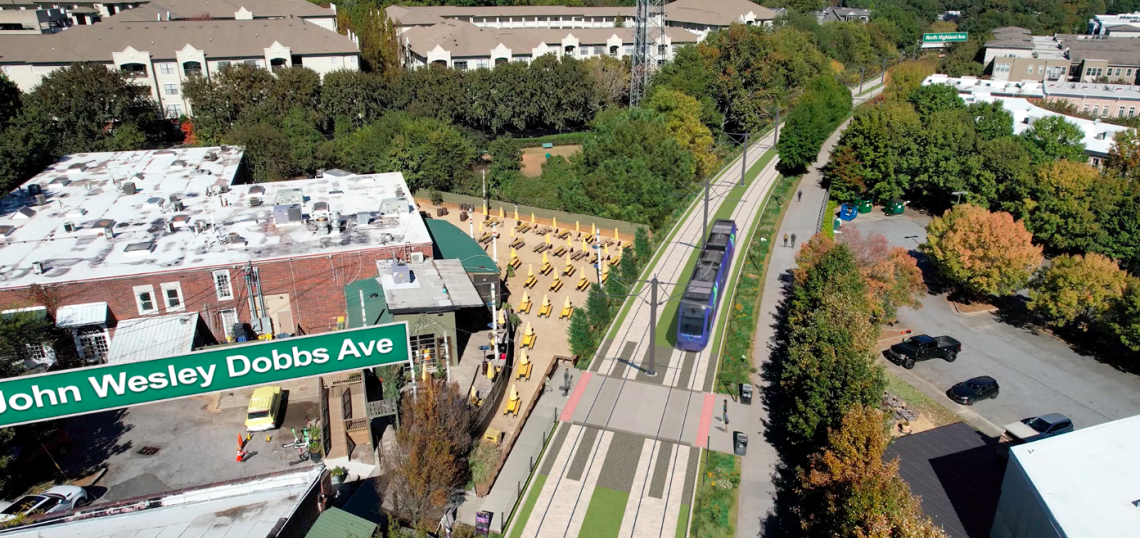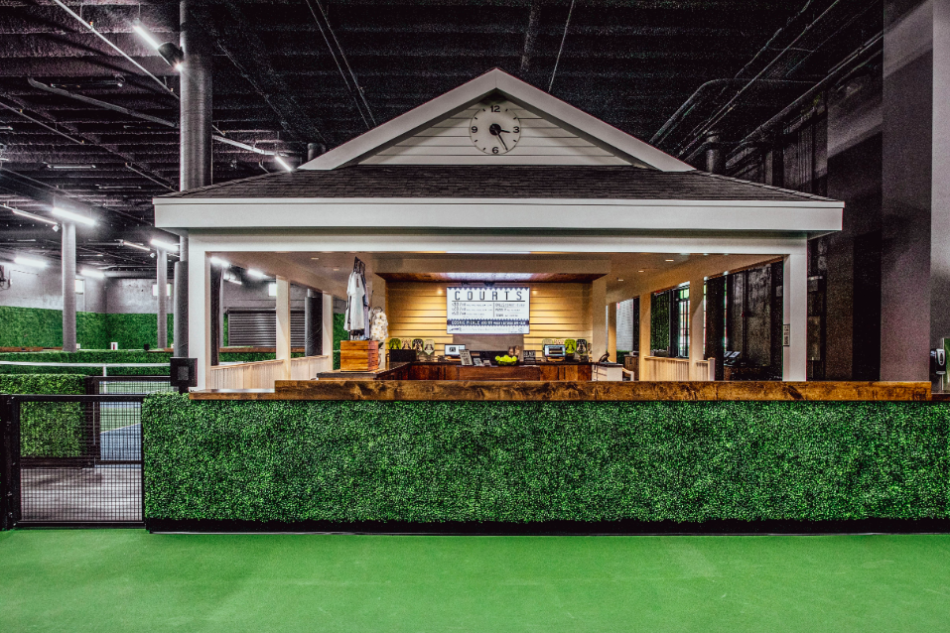CITYWIDE—At the annual State of the BeltLine address, held last fall among a roomful of real estate execs and other city power brokers, Atlanta Mayor Andre Dickens spoke of BeltLine transit like a foregone conclusion, a means of helping fight inequality, boost mobility, and finish the BeltLine’s original vision. Every visual presented at that summit showed a future light-rail system operating alongside BeltLine patrons.
But an interview the mayor gave the Atlanta News First broadcast station this week, suggesting that BeltLine rail’s future might not be set in stone, is causing ripples. Dickens was discussing the future implementation of four new MARTA infill stations—he wants to see each transit stop finished “in a reasonable amount of time,” which means “some activity between now and 2030,” with the first likely being near Murphy Crossing, Dickens told the news station—to complement BeltLine mobility.
 How the planned Atlanta Streetcar extension's Ralph McGill stop could relate to Fourth Ward Project's offices, per an earlier study. Kimley-Horn/MARTA 2040; via Vimeo
How the planned Atlanta Streetcar extension's Ralph McGill stop could relate to Fourth Ward Project's offices, per an earlier study. Kimley-Horn/MARTA 2040; via Vimeo
Exactly what BeltLine transit will look like—if any is implemented at all—will be determined by ongoing studies MARTA is conducting, to see which transit mode best fits the BeltLine and how the existing Atlanta Streetcar can be improved. (In September, the BeltLine launched its own federally funded transit study for 14 miles of the loop, which is expected to take two years.)
Dickens’ statement that’s set rail proponents and urbanists on edge was this, according to the broadcast station: “Once we come out with [the results of the MARTA analysis], we’ll make sure the public knows, and we can make a clear decision on do we want it to be on rails, do we want it to be on rubber tires, do we want small pods, or do we want to leave this as a walking trail? … I think by having it as right now with four infill stations, you’re seeing connectivity coming to the BeltLine. Now how do we get people around the BeltLine?”
…
DOWNTOWN—Like Exhibit A that high-rise office conversions to residential are no walk in the park, a Fairlie-Poplar district building’s rebirth as apartments appears to be in jeopardy downtown. Texas developers Wolfe Investments and Bluelofts have been retrofitting the 13-story 41 Marietta St. building—a 1970s structure at the corner of Marietta and Forsyth streets—into 120 apartments, after Wolfe purchased it in 2018 for $11.5 million.
But as Bisnow Atlanta reports, the project’s lender has filed to foreclose on a $20 million loan funding the work next month, potentially throwing a wrench into conversion plans. Other aspects of the project were reportedly set to include retail spaces, lounges, and a post office on the ground floor.
Atlanta development hawks may recall the same development duo is behind the residential conversion of the Grant Building, an 1898 landmark located on another side of the block, facing Broad Street. That conversion kicked off in July; where it stands today isn’t clear, but the AJC reports the Arbor Realty Trust loan facing foreclosure is not tied to the Grant Building work.
…
ARMOUR YARDS—Painted Hospitality officials send word their warehouse-eatertainment conversion project the Painted Pickle has officially arrived in the Armour Yards district where south Buckhead meets Midtown (and a new BeltLine trail segment, sort of).
The pickleball emporium—sorry, compeatery™—has taken shape at 279 Ottley Drive, a few doors down from SweetWater Brewing Company, highlighted by sexy social interior spaces and a 32,500-square-foot indoor “court”yard for pickleball fanatics. It’s billed as the “the most ambitious entertainment food and beverage-focused pickleball concept in the country.” Find a thorough preview of how the Armour Yards project turned out in the gallery above.
...
Follow us on social media:
Twitter / Facebook/and now: Instagram
• Downtown news, discussion (Urbanize Atlanta)









